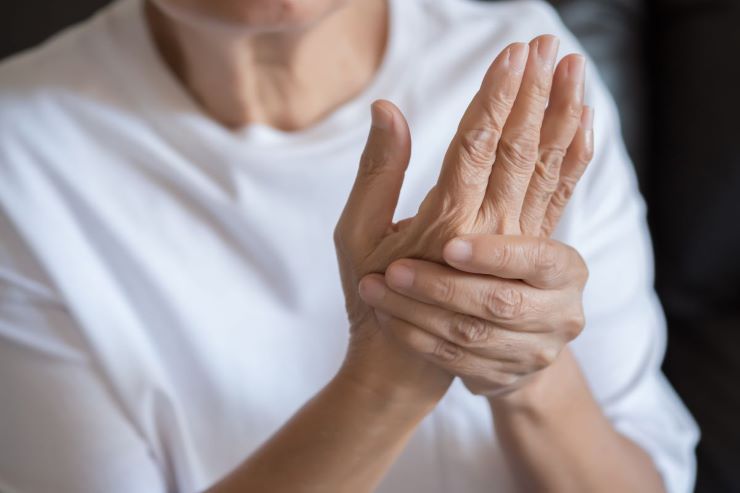Best Topical Treatments for Osteoarthritis Joint Pain
Osteoarthritis is a common form of arthritis that affects millions of people worldwide, causing pain, stiffness, and reduced mobility in joints. While there's no cure for osteoarthritis, various topical treatments can help manage pain and improve quality of life. This article explores the best non-prescription topical treatments for osteoarthritis joint pain, offering insights into effective options for those seeking relief.

What are the most effective over-the-counter topical treatments for osteoarthritis?
Over-the-counter topical treatments for osteoarthritis pain include creams, gels, and patches containing active ingredients that can help alleviate discomfort. Some of the most effective options are:
-
Nonsteroidal anti-inflammatory drugs (NSAIDs): Topical NSAIDs like diclofenac gel have shown significant effectiveness in reducing osteoarthritis pain.
-
Capsaicin: Derived from chili peppers, capsaicin creams can help reduce pain by desensitizing nerve receptors.
-
Menthol: Products containing menthol provide a cooling sensation that can help temporarily relieve pain and improve flexibility.
-
Salicylates: These compounds, related to aspirin, can help reduce pain and inflammation when applied topically.
How do topical NSAIDs work to relieve osteoarthritis pain?
Topical NSAIDs work by penetrating the skin and reaching the affected joint, where they reduce inflammation and pain. Unlike oral NSAIDs, topical versions have a lower risk of systemic side effects as they are applied directly to the painful area. This localized approach allows for targeted pain relief without significantly affecting other parts of the body.
When applied, the medication is absorbed through the skin and into the underlying tissues. It then works to inhibit the production of prostaglandins, which are responsible for pain and inflammation in osteoarthritis. This targeted action can provide effective relief for many people suffering from osteoarthritis joint pain.
What are the benefits of using capsaicin for joint pain relief?
Capsaicin, the compound responsible for the heat in chili peppers, offers several benefits for osteoarthritis pain relief:
-
Long-lasting effect: With regular use, capsaicin can provide sustained pain relief by depleting substance P, a neurotransmitter that signals pain.
-
Non-addictive: Unlike some pain medications, capsaicin is not habit-forming and can be used safely for extended periods.
-
Minimal side effects: Most people experience only mild, temporary burning or stinging at the application site.
-
Improved function: By reducing pain, capsaicin creams can help improve joint function and mobility.
-
Complementary treatment: Capsaicin can be used alongside other osteoarthritis treatments for enhanced pain relief.
Can menthol-based products effectively manage osteoarthritis symptoms?
Menthol-based products can be effective in managing osteoarthritis symptoms, particularly for short-term relief. These products work through several mechanisms:
-
Cooling effect: Menthol creates a cooling sensation that can help distract from pain and provide temporary relief.
-
Increased blood flow: Topical menthol can improve circulation to the affected area, potentially aiding in healing and reducing stiffness.
-
Pain receptor modulation: Menthol may interact with pain receptors, helping to reduce the sensation of pain in the affected joint.
-
Muscle relaxation: The cooling effect of menthol can help relax tense muscles around the painful joint, improving overall comfort.
While menthol products may not address the underlying cause of osteoarthritis, they can provide valuable symptomatic relief and improved mobility for many individuals.
What unique tips can help maximize the effectiveness of topical treatments?
To get the most out of topical treatments for osteoarthritis joint pain, consider these unique tips:
-
Timing matters: Apply topical treatments before activities that typically cause pain to preemptively manage discomfort.
-
Combine with gentle massage: Massaging the area while applying the product can improve absorption and increase blood flow to the affected joint.
-
Use after warm showers: Applying topical treatments after a warm shower when pores are open can enhance absorption.
-
Rotate treatments: Alternating between different types of topical treatments (e.g., NSAIDs and capsaicin) may prevent tolerance and maintain effectiveness.
-
Consider occlusion: For some treatments, covering the applied area with a wrap or bandage can increase absorption and effectiveness.
How do different topical treatments compare in terms of effectiveness and cost?
When comparing topical treatments for osteoarthritis joint pain, it’s important to consider both effectiveness and cost. Here’s a comparison of some popular options:
| Product Type | Brand Example | Active Ingredient | Effectiveness | Cost Estimation |
|---|---|---|---|---|
| NSAID Gel | Voltaren | Diclofenac | High | $20-$30 per tube |
| Capsaicin Cream | Zostrix | Capsaicin | Moderate-High | $15-$25 per tube |
| Menthol Rub | Biofreeze | Menthol | Moderate | $10-$20 per tube |
| Salicylate Cream | Aspercreme | Trolamine Salicylate | Moderate | $8-$15 per tube |
| Lidocaine Patch | Salonpas | Lidocaine | Moderate | $15-$25 per box |
Prices, rates, or cost estimates mentioned in this article are based on the latest available information but may change over time. Independent research is advised before making financial decisions.
The effectiveness of these treatments can vary from person to person. NSAIDs like diclofenac gel tend to show the highest overall effectiveness in clinical studies, but they may also be more expensive. Capsaicin creams offer a good balance of effectiveness and cost, while menthol rubs and salicylate creams provide moderate relief at a lower price point. Lidocaine patches can be effective for some individuals but may be less cost-effective for daily use.
In conclusion, topical treatments offer a range of options for managing osteoarthritis joint pain. From NSAIDs to natural ingredients like capsaicin and menthol, these treatments can provide significant relief without the systemic side effects often associated with oral medications. By understanding the different options available and how to use them effectively, individuals with osteoarthritis can find a topical treatment that best suits their needs and budget, helping to improve their quality of life and manage their symptoms more effectively.
This article is for informational purposes only and should not be considered medical advice. Please consult a qualified healthcare professional for personalized guidance and treatment.




